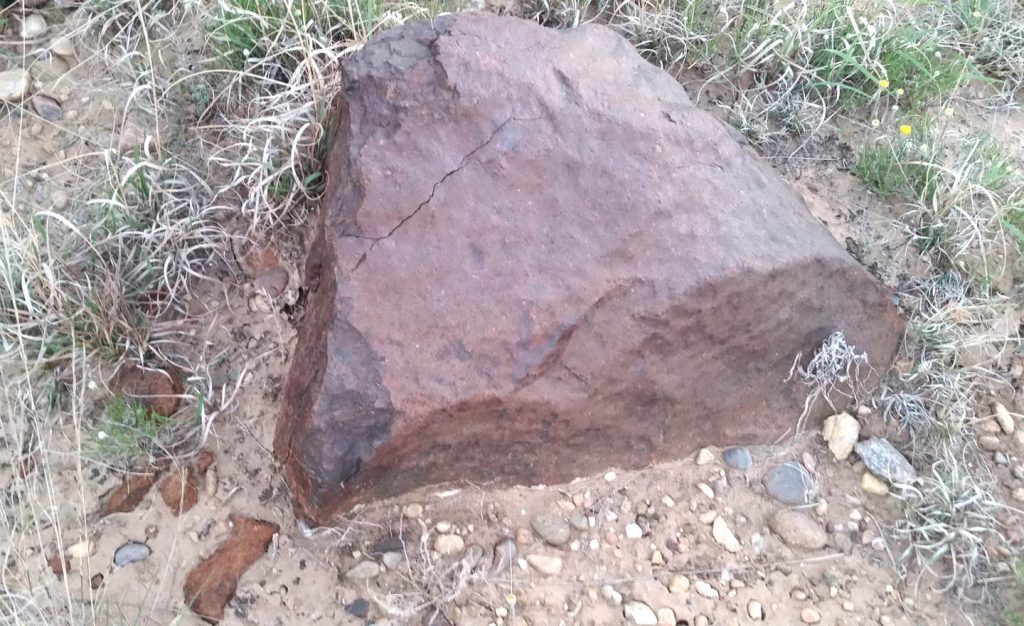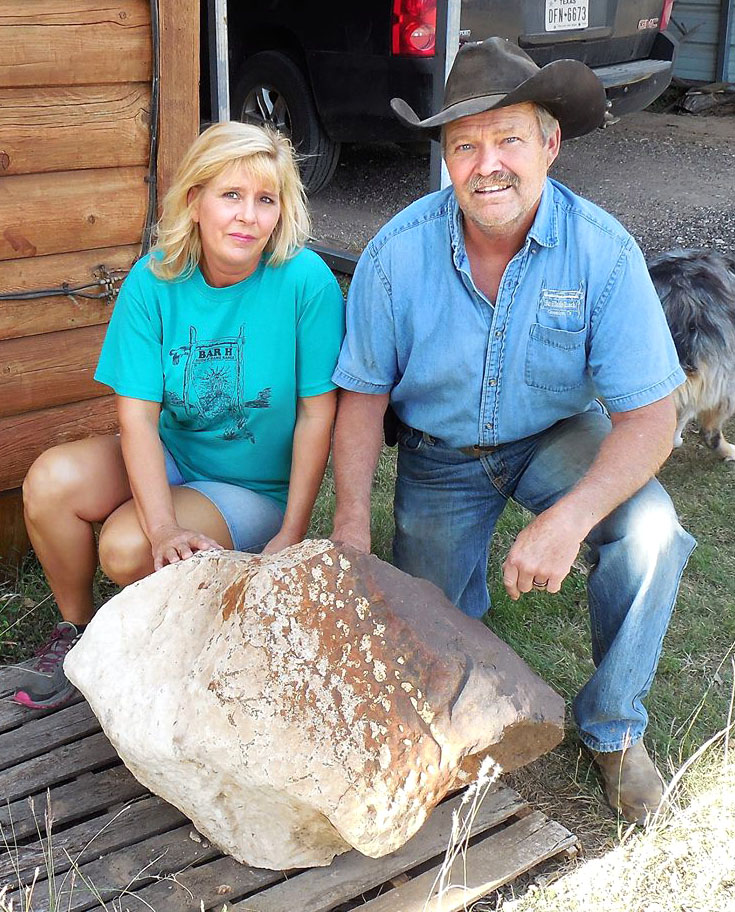Large meteorite uncovered from the Texas ground

A large meteorite, named Clarendon (c), was discovered by a local Texas resident, by accident on April 6, 2015. At first, it appeared as a boulder, immersed in the sandy soil, but the experts soon classified it as a stony meteorite. This is the biggest individual meteorite found in Texas, and likely the second largest individual chondrite meteorite ever discovered in the US. The piece was sold to the Texas Christian University, where it's now on public display.
The man who found the meteorite, Frank Hommel, freed what then looked as a giant rock, with a tractor and took it home. The rock was weighted at 345 kg (760 pounds) initially, and Hommel recovered additional 32 kg (70 pounds) of material after re-visiting the site.

DeeDee and Frank Hommel with the Clarendon (c) meteorite discovered on their land. Image credit: Ruben Garcia
Hommel and his family were uncertain about the rock's origin and contacted Eric Twelker, a meteorite seller at Meteorite Market Website, from Juneau, Alaska. The sample was soon tested at the University of Washington by Dr. Tony Irving. The composition analysis revealed iron-nickel grains and abundant presence of chondrules, round grainy minerals, flash-heated in the solar nebula 4.5 billion years ago. As the material cooled down, it solidified into several millimeters thick spheres. The presence of iron-nickel combination and chondrules proved the rock is a meteorite beyond any doubt.
"I get about six to a dozen inquiries on rocks every day. I try to answer all of them—and give a rock ID if possible. I have to say my patience gets tried sometimes after looking at slag, basalt, and limestone day after day. But if I am in the right mood, then it is fun. This one made it fun. Over the years, I've probably had a half dozen discoveries this way, but this is by far the most exciting," said Twelker about this particular case.

Video credit: Ruben Garcia
The meteorite was classified as an L4 chondrite meteorite, implying it was low in iron and retained an ancient texture in the chondrules, which were almost unaltered since their formation. The weathering on the surface suggested the meteorite was buried there for a long period of time. It seems nobody noticed it sooner because the wind has removed the upper soil layer in a deflation process, only very gradually. It is unknown when the meteorite landed in Texas.
The meteorite was dubbed Clarendon (c) because it was third in the sequence recovered from the Clarendon area in Texas. Meteorite Clarendon (a) was discovered in 1979 while (b) was found in 1981. Both were classified as H5, high in metal, unrelated stony chondrites.


A picture of the Clarendon (c) meteorite before it was removed from the ground. Image credit: Dee Dee and Frank Hommel
Following the discovery publication in Meteorite Bulletin in October 2016, Clarendon was sold to the Texas Christian University (TCU) in Ft. Worth, a home of the famous Monning Meteorite Collection, and put on public view.
"How amazing to walk into a dude ranch and see a museum quality specimen. I've never seen a meteorite this big outside of a museum or gem show," said Ruben Garcia, a meteorite hunter, dealer, and collector, known as Mr. Meteorite.
Clarendon (c) is the biggest individual meteorite found in Texas, and likely the second largest individual chondrite meteorite ever discovered in the US. The Paragould meteorite which exploded over Arkansas in 1930 was the only larger one, estimated at 371.9 kg (820 pounds) of pure meteorite material, and disposed for display at the Arkansas Center for Space and Planetary Sciences in Fayetteville.
Featured image: A picture of the Clarendon (c) meteorite before it was removed from the ground. Image credit: Dee Dee and Frank Hommel

Commenting rules and guidelines
We value the thoughts and opinions of our readers and welcome healthy discussions on our website. In order to maintain a respectful and positive community, we ask that all commenters follow these rules.